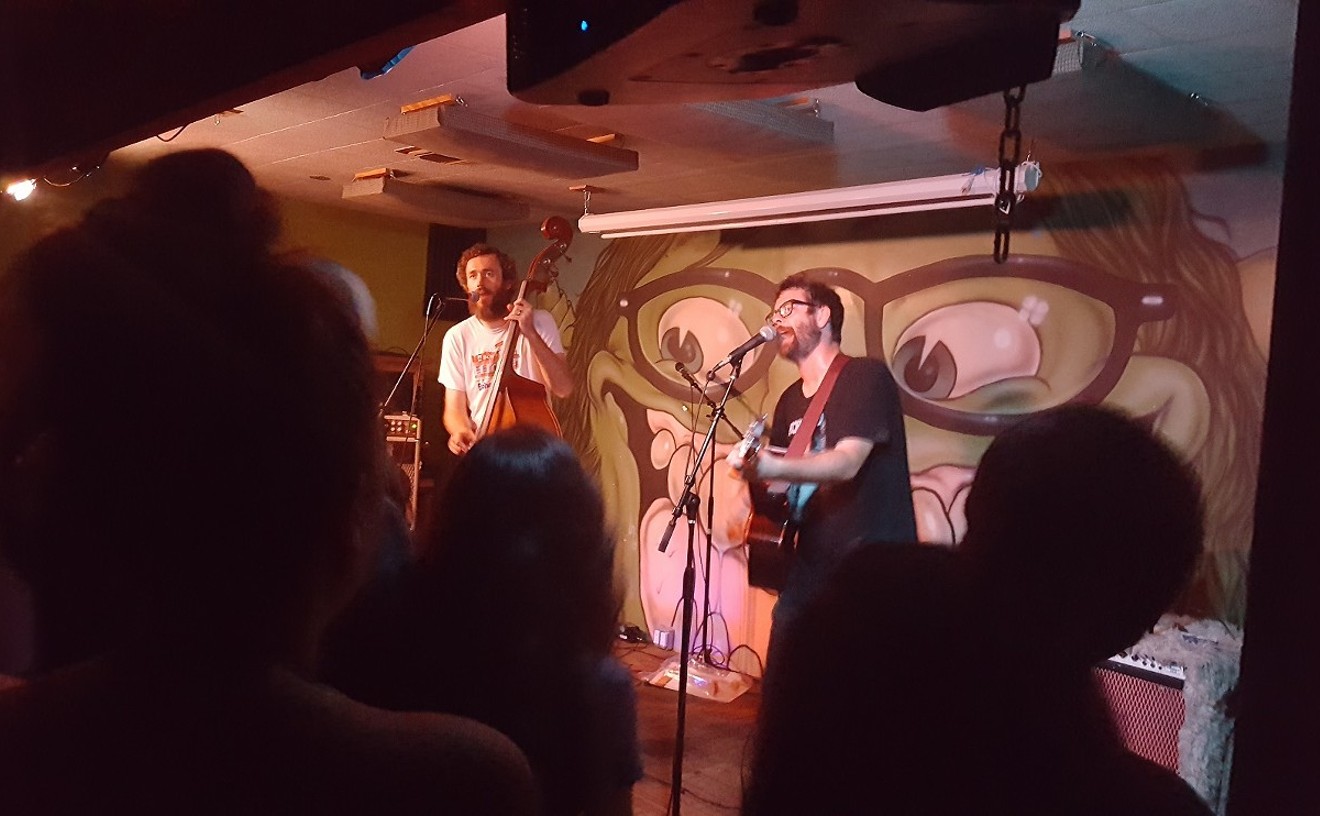Bess' painting technique is reminiscent of Rembrandt and Vermeer, the Dutch masters who painted photorealistic portraits of scientists and coroners with the tools of their respective trades. She has transitioned their signature style to the present day, infusing ordinary portraits with timeless elements of botany, biology, and the occult. In Lydia and the Muskrat Skull, an exotic, pink-haired goddess holds a detailed antique magnifying glass and a tiny skull. In Vermeer's time, these would have been clues to her identity. With Lydia, they are merely props. Bess describes her models as unconventional, unique women. Yet it is Bess' mastery of technique, the way she pulls light from the shadows of her oils, that lends each of these women an angelic, immortal quality. It is the haunted look in her eyes, the way they tilt upward and to her left, as if deep in thought, that allow the viewer to see into this woman's soul.
Even the most casual item can transcend mediocrity when painted with Bess' skilled hand. In Farmstand for One at Midnight, an ordinary cantaloupe becomes as potent a visual as the cadaver in Rembrandt's Anatomy Lesson of Dr. Nicholaes Tulp. The brunette's heart-shaped face and plunging neckline point us to the quartered remains of the melon, innards flayed open, juice-covered seeds spilling down the sides. It's at once an ordinary fruit and a stand-in for something more sinister. Not convinced? Look closely at the inky black darkness of the background and you'll see skeletal trees and ghostly wisps of white hinting at the model's macabre intentions.
The greatest weakness in "Divining Nature" is that the subjects sometimes seem at odds with their surroundings. In a Rembrandt portrait, there's a visceral connection between the scientist and his tools. Not always so with Bess' women. In Final Secrets, for example, a dark-haired woman in black is seated alongside a standing figure in a long, multicolored gown. Together they open the cap of a skull, as if to divine an ancient, magical secret. But the image is flat, two-dimensional. The background and props appear staged, as if they were all part of a bizarre contract between Hot Topic and a Sears Portrait Studio. It's no surprise that Final Secrets has sat unsold in Perihelion's back gallery for months, while others in the series were snatched up by collectors on opening night.
The most intriguing use of props comes in Epic, the lone image featuring a couple. He is an intimidating figure in black combat boots and t-shirt. She is tall and graceful with wild black curls, a gray tutu, torn stockings, and shiny stiletto heels. Their arms are bound together with black ribbon, their faces turned toward each other in a combination of anger, bliss, and ecstasy. This is the dance of ill-fated lovers — a pair who can't resist the pull of destiny while knowing they will bring each other only pain. Every prop screams abuse. She is supported by crutches, a dingy, naked baby doll dangling from one arm. The other arm is caught in the tight grasp of her male companion. Yet she doesn't pull away. It's a striking contrast from the other portraits. This image is lighter, the detailed backdrop of a stucco wall clearer — as if to say this woman's strength is not mystery or talent, but the ability to endure.
Upon closer inspection, she isn't the only one of Bess' women who has suffered. Sarah Winchester pays homage to the Winchester Repeating Arms heiress, who, on the advice of a psychic, built a 160-room mystery mansion to appease the spirits of those killed by her family's rifles. A model representing Winchester stands before the remains of her house, which she worked on continuously for nearly 40 years until her death. In her arms is a rooster representing alectromancy, an ancient method of divination in which the bird spells out the future by pecking grain. It's an intriguing piece. The ghostly tale is furthered by Bess' choice of medium — graphite pencil on vellum — which is clearly visible when viewed at an angle but gains a ghostly softness when viewed straight on. It's as if her models are slowly disappearing from each sketch, fading over time until there are just whispers of their original beauty.
These sketches are some of the strongest pieces in the show. Though Bess has superb mastery of the oil medium, the sketches allow her ladies to shine naturally, without the aid of fanciful hair colors or flawless skin. They are stripped to the bones, an ironic description, as several of her models do, indeed, hold skulls and carcasses as props. A fresh-faced beauty poses with a clear bottle containing the remains of a bat in Holy Water. Here, the jagged vertical lines of icicles drip from the top edge of the drawing, contrasting visually with the strong horizontal lines of the young girl's clothing. The juxtaposition of elements is jarring: the horizontal stripes and sweet, smooth face tell us she might be jailbait, yet the sharp icicles and occult paraphernalia say she's not as innocent as she looks.
Part of Bess' talent lies in her ability to connect with things past. Not with Ouija boards or tarot cards, but through research, practice, and skill. In "Divining Nature," she has resurrected the dark, signature style of the Dutch masters and channeled the spirits of Sarah Winchester and other unusual women. Bess is not always successful at capturing the essence of those spirits — but in the face of her successes, it's hard to remain a skeptic.










